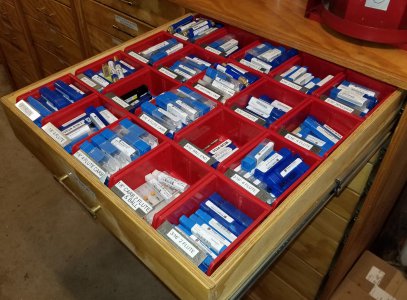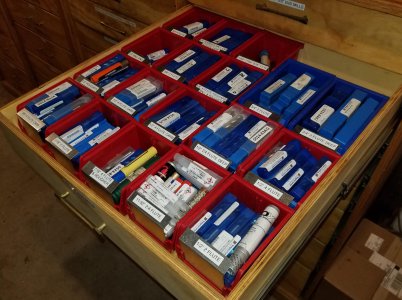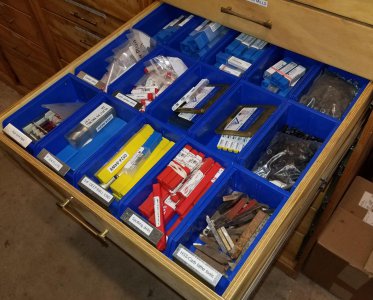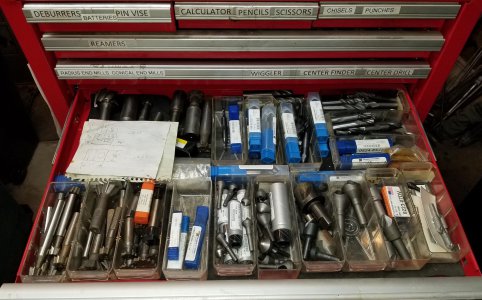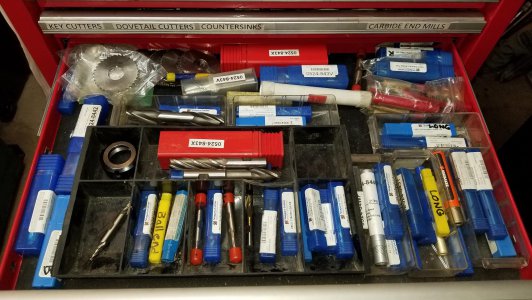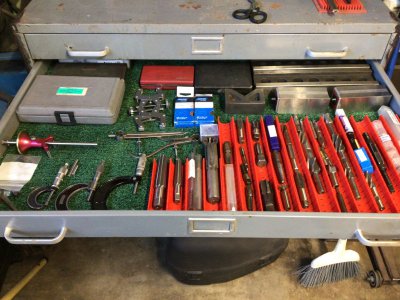This is probably a silly question, but is there a correct methodology for organizing end mills? I’ve started going through the cache of tooling acquired from my father’s workshop and am somewhat overwhelmed.
A conservative estimate so far is there are around 600-700 end mills. The sizes range from .025” (the smallest I’ve found so far) to 1.25” diameter. There are 2 flute, multi-flute, ball end, and T-end versions. There are double ended (with some having one end broken) and a lot of short, single ended. There are even ones that are tapered or have been modified or are asymmetrical.
The process so far (& almost completed) has been to separate by cutter diameter, grouping by; up to .099”, .100” to .199”, .200” to .299” and so on.
My plan for phase 2 would be to separate the diameter groups by the number of flutes; 2 flute, 3 or more flutes.
The last phase of organizing would be to separate out ones that have unique characteristics, i.e., ball end, tapered, T-end, etc. I would also at this point cull out any that are damaged or have been modified to where I doubt I’d have a use for them (note, none will be thrown out, just boxed and saved).
I found some nice (and cheap) plastic sorter boxes at Menards that fit nicely in the drawers of the tool cabinet I just finished. I’m thinking of picking up a few dozen more for storing the end mills and the hundreds of taps also acquired.
A conservative estimate so far is there are around 600-700 end mills. The sizes range from .025” (the smallest I’ve found so far) to 1.25” diameter. There are 2 flute, multi-flute, ball end, and T-end versions. There are double ended (with some having one end broken) and a lot of short, single ended. There are even ones that are tapered or have been modified or are asymmetrical.
The process so far (& almost completed) has been to separate by cutter diameter, grouping by; up to .099”, .100” to .199”, .200” to .299” and so on.
My plan for phase 2 would be to separate the diameter groups by the number of flutes; 2 flute, 3 or more flutes.
The last phase of organizing would be to separate out ones that have unique characteristics, i.e., ball end, tapered, T-end, etc. I would also at this point cull out any that are damaged or have been modified to where I doubt I’d have a use for them (note, none will be thrown out, just boxed and saved).
I found some nice (and cheap) plastic sorter boxes at Menards that fit nicely in the drawers of the tool cabinet I just finished. I’m thinking of picking up a few dozen more for storing the end mills and the hundreds of taps also acquired.

